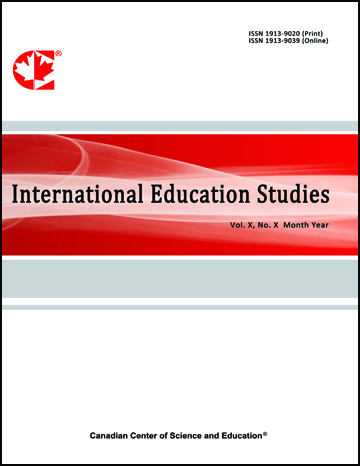The Investigating of Self-Regulatory Method to Enhance Students’ Autonomous Learning Ability for Freshmen at Yunnan Normal University
- Jiaoying Ji
- Saifon Songsiengchai
- Clinton Chidiebere Anyanwu
- Nur Fauziyah
Abstract
This study focused on freshmen at Yunnan Normal University. The research objectives were threefold: (1) to investigate the role of self-regulatory methods in enhancing students’ autonomous learning ability, (2) to study the differences between the control group and the experimental group, and (3) to determine if students are satisfied with self-regulatory methods for enhancing autonomous learning ability. The research sample included 9,000 new students in the 2023 academic year. There were 48 classrooms, each consisting of 180-187 students. Students from two randomly selected classrooms were studied. The study employed stratified random quantitative analysis. Statistical analysis used mean average value (X̄), standard deviation (S.D.), and variance to interpret the data. The main research tools were questionnaires, lesson plans, and a satisfaction questionnaire. The results showed: (1) The overall mean score was 4.11 with a standard deviation of 0.4, indicating a generally high recognition of autonomous learning methods among the students in the experimental group, reaching the “agree” level; (2) for the experimental group X̄ was 94.57, while the control group had an X̄ of 75.15. The experimental group exhibited less variability in scores, with an S.D. of 2.82 compared to 9.49 for the control group, indicating more consistent and concentrated performance among the experimental group students.
Additionally, the variance for the experimental group was 7.98, whereas the variance for the control group was 90.13, demonstrating the stability and reliability of the experimental group’s performance. (3) By comparing the results of the experimental and control groups, it is evident that self-regulatory methods significantly enhance students’ satisfaction with their autonomous learning experiences. The experimental group had higher satisfaction levels, with an X̄ of 4.71, very satisfied, and an S.D. of 0.23, compared to the control group, which had an X̄ of 2.72, dissatisfied, and an S.D. of 0.71. This study’s results indicate that self-regulatory methods significantly enhance students’ autonomous learning ability, with noticeable differences between the experimental and control groups, and that students are satisfied with these methods. Future research could further explore the application of self-regulatory methods across different educational stages and subjects.
- Full Text:
 PDF
PDF
- DOI:10.5539/ies.v18n2p89
Journal Metrics
h-index : 62
i10-index: 604
Index
- Academic Journals Database
- AcademicKeys
- ACNP
- ANVUR (Italian National Agency for the Evaluation of Universities and Research Institutes)
- BASE (Bielefeld Academic Search Engine)
- Berkeley Library
- CiteFactor
- CNKI Scholar
- COPAC
- Copyright Clearance Center
- CrossRef
- DESY Publication Database
- DTU Library
- EBSCOhost
- Education Resources Information Center (ERIC)
- Educational Research Abstracts
- Electronic Journals Library
- Elektronische Zeitschriftenbibliothek (EZB)
- Excellence in Research for Australia (ERA)
- Genamics JournalSeek
- GETIT@YALE (Yale University Library)
- Ghent University Library
- Harvard Library
- Jisc Library Hub Discover
- JournalGuide
- JournalTOCs
- LOCKSS
- LSE Library
- MIAR
- Microsoft Academic
- Mir@bel
- NewJour
- Norwegian Centre for Research Data (NSD)
- OAJI
- Open J-Gate
- PKP Open Archives Harvester
- Polska Bibliografia Naukowa
- Publons
- Qualis/CAPES
- ResearchGate
- ROAD
- Scilit
- SHERPA/RoMEO
- SOBIAD
- Southwest-German Union Catalogue
- Standard Periodical Directory
- Stanford Libraries
- Technische Informationsbibliothek (TIB)
- The Keepers Registry
- UCR Library
- Ulrich's
- UniCat
- Universe Digital Library
- UoS Library
- USask Library
- VOCEDplus
- WorldCat
Contact
- Chris LeeEditorial Assistant
- ies@ccsenet.org
